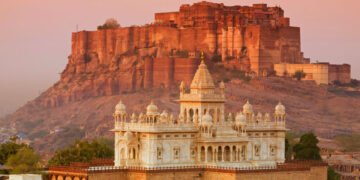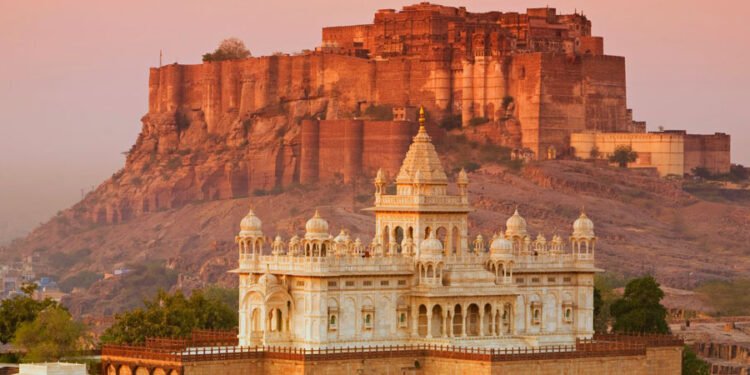Title: Jodhpur’s Legacy: Exploring the Chronicles of The Blue City
Introduction:
Nestled at the edge of the Thar Desert in the northwestern state of Rajasthan, Jodhpur, also known as the Blue City, is a mesmerizing destination that echoes with the tales of a bygone era. Steeped in history, culture, and architectural splendor, Jodhpur stands as a testament to the rich heritage and regal grandeur of Rajasthan. In this exploration of the Blue City, let’s traverse through its narrow alleyways and towering structures, each whispering stories of the past.
Mehrangarh Fort: A Citadel in the Sky
**Majestic Fortifications:**
Dominating the city’s skyline, Mehrangarh Fort stands as an architectural marvel perched atop a rocky hill. Its massive walls, reaching heights of up to 36 meters, boast intricate carvings and latticed windows. As visitors pass through its gates, the fort unfolds a narrative of battles, royalty, and architectural prowess.
**Palatial Marvels:**
Within the fort, palatial structures like Moti Mahal, Phool Mahal, and Sheesh Mahal await exploration. Each is adorned with opulent decorations, mirror work, and vibrant frescoes that transport visitors to an era of regal splendor. The Jaswant Thada, a marble cenotaph within the fort complex, offers panoramic views of the city and serves as a serene retreat.
The Blue Hues of Jodhpur:
**Architectural Tradition:**
The iconic blue-painted houses clustered around Mehrangarh Fort create a captivating panorama. This tradition is rooted in the practical need to keep the houses cool in the desert heat, but it has evolved into an integral part of the city’s identity.
**Sardar Market and Clock Tower:**
Wandering through the bustling lanes of the old city leads to the vibrant Sardar Market, where the towering Clock Tower stands as a sentinel. The market is a sensory delight, offering a kaleidoscope of colors, sounds, and aromas. From traditional textiles and spices to handicrafts and jewelry, the market is a treasure trove for shoppers.

Umaid Bhawan Palace: Regal Resplendence
**Architectural Extravagance:**
Umaid Bhawan Palace, an architectural masterpiece, serves as both a royal residence and a luxury hotel. Built during the reign of Maharaja Umaid Singh, the palace showcases a fascinating blend of Indian and Western architectural styles. The sprawling grounds, adorned with lush gardens and peacocks, add to the regal ambiance.
**Heritage Hotels:**
Jodhpur’s heritage extends to its palatial havelis and converted mansions, transformed into luxurious heritage hotels. Staying in these properties provides guests with a glimpse into the regal lifestyle of a bygone era, complete with intricate Rajasthani decor, traditional cuisine, and impeccable hospitality.
Cultural Festivals and Traditions:
**Marwar Festival:**
Jodhpur hosts the Marwar Festival, a celebration of the region’s folk music, dance, and traditions. The festival pays homage to the martial spirit of the Marwar rulers and provides a platform for artists to showcase their talents through performances and cultural events.
**Ghanta Ghar:**
The Ghanta Ghar, or Clock Tower, is not only a landmark in Sardar Market but also a gathering point for locals during festivals and celebrations. Vibrant processions, traditional music, and lively dances contribute to the cultural tapestry of Jodhpur.
Conclusion:
Jodhpur, the Blue City, transcends being a mere destination; it is a living canvas that narrates tales of valor, royalty, and cultural richness. From the towering Mehrangarh Fort to the vibrant Sardar Market, every corner of Jodhpur invites visitors to immerse themselves in the heritage of Rajasthan. The city’s timeless charm, reflected in its blue-painted houses and regal palaces, beckons travelers to experience the grandeur and hospitality of a bygone era in the heart of the Thar Desert. Whether wandering through historic forts or savoring the vibrant culture during festivals, Jodhpur remains a captivating journey through time and tradition.



















